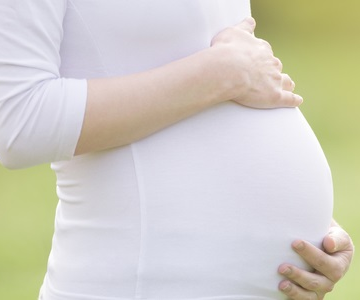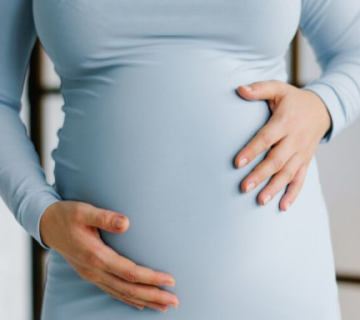
Does Adenomyosis Cause Infertility
Living with unexplained pelvic pain, heavy periods, and fears about fertility can feel like a constant challenge. If you’ve ever wondered why your menstrual cycle is so painful—or if these painful periods might affect your chances of getting pregnant—you’re not alone. Adenomyosis, a condition where tissue similar to the uterine lining grows within the muscular walls of the uterus, is often overlooked but can play a big role in fertility issues. In this in-depth article, we’ll explore every angle of adenomyosis and how it might—or might not—impact your dream of starting or expanding your family. We’ll also bring you unique insights, practical tips, and a few interactive elements to keep you engaged from start to finish. By the end, you’ll have a stronger understanding of this condition, plus fresh ideas and research data that aren’t found in most other resources.
What Is Adenomyosis?
Adenomyosis is a condition where endometrial-like tissue (the same kind that lines the uterus) starts growing into the uterus’s muscular walls. This growth causes the uterus to become thicker and sometimes larger. Unlike endometriosis—which occurs when that tissue grows outside the uterus—adenomyosis stays within the walls of the uterus itself.
Key Features
- Location of abnormal tissue growth: Inside the muscular layer of the uterus (the myometrium).
- Common symptoms: Heavy or prolonged menstrual bleeding, painful cramps, pelvic pain, and bloating.
- How it differs from endometriosis: Endometriosis involves similar tissue but grows outside the uterus, often on nearby organs like ovaries or fallopian tubes. Adenomyosis occurs specifically within the uterine muscle.
Adenomyosis and Fertility: The Basic Link
Many people ask: “Does adenomyosis cause infertility?” While research is ongoing, adenomyosis can contribute to fertility problems in several ways. It may alter how the uterus contracts, affect how an embryo implants, or trigger inflammation that interferes with early pregnancy. However, having adenomyosis doesn’t automatically mean you cannot get pregnant. Many individuals with adenomyosis do conceive, whether naturally or with the help of medical treatments.
Core Symptoms and Why They Matter
One important clue in understanding adenomyosis and potential fertility impacts is to look at its symptoms. Below are the most frequent ones:
- Heavy or prolonged menstrual bleeding (menorrhagia)
✔️ Could lead to anemia or fatigue
❌ Harder to keep track of a regular cycle if flow is irregular - Severe menstrual cramps (dysmenorrhea)
✔️ Early detection clue (pain often signals a problem)
❌ Pain can be intense enough to affect daily activities - Chronic pelvic pain
✔️ Encourages medical evaluation sooner
❌ Ongoing discomfort can influence mental well-being - Enlarged uterus or “bulky” feeling
✔️ Often detectable on pelvic exam or ultrasound
❌ Might be mistaken for fibroids or other conditions
The Fertility Connection
- Implantation issues: Excess tissue can disrupt the lining where an embryo tries to attach.
- Inflammation: Adenomyosis can create a chronic inflammatory response, which can interfere with fertilization or implantation.
- Abnormal contractions: The uterus may contract differently, potentially affecting sperm travel or implantation.
Interactive Element #1: Quick Poll
How familiar are you with adenomyosis?
- I’ve known about it for years.
- I’ve heard the term but never studied it deeply.
- I’m brand-new to this information.
- I have it or suspect I do, but I’m still learning.
(This poll is just for your personal reflection—no data is collected.)
Adenomyosis vs. Endometriosis vs. Fibroids
Adenomyosis sometimes gets confused with other uterine conditions. Understanding the differences can help you and your doctor come up with a more targeted treatment plan.
| Condition | Tissue Growth Location | Common Symptoms | Impact on Fertility | Typical Age Group |
|---|---|---|---|---|
| Adenomyosis | Endometrial-like tissue in the uterine muscle (myometrium) | Heavy bleeding, severe cramps, enlarged uterus | May interfere with implantation and pregnancy; can cause miscarriages or subfertility | Late 30s to 50s, but can occur earlier |
| Endometriosis | Endometrial-like tissue outside the uterus (e.g., ovaries, pelvic cavity) | Painful periods, pain during intercourse, possible cysts (“chocolate cysts”) | Known to affect fertility by blocking tubes or causing inflammation | Typically diagnosed in 20s-40s |
| Fibroids | Noncancerous growths in or on the uterus | Heavy bleeding, pelvic pressure, sometimes no symptoms at all | Can distort the uterine cavity, affecting implantation or pregnancy outcomes | Often found in 30s-40s |
The Overlap
- Shared symptoms: Pelvic pain, heavy or painful periods.
- Shared fertility concerns: Inflammation, abnormal uterine shape, or subfertility.
- Differences: Fibroids are solid tumors; endometriosis is external to the uterus; adenomyosis is internal in the uterine walls.
Why Adenomyosis May Affect Fertility in More Detail
Let’s dive deeper into the mechanisms that connect adenomyosis with fertility challenges. While there’s still debate among doctors, the following points often come up:
1. Changes in Uterine Contractions
- Abnormal muscle fiber arrangement: With adenomyosis, the uterus’s structure can change, leading to irregular contractions.
- Why it matters: Proper contractions help sperm travel upward toward the fallopian tubes and help an embryo attach. If those contractions are off, it may be harder for the sperm to meet the egg.
2. Chronic Inflammation
- Ongoing inflammation: Adenomyotic tissue can release inflammatory molecules.
- Result: This inflammatory state may disrupt implantation or early embryo development.
3. Altered Uterine Lining Thickness
- Ectopic tissue growth: Adenomyosis can make the endometrium thicker than normal in some areas, but thinner in others.
- Why it matters: An embryo needs a stable, uniform environment to implant. Irregularities in thickness or biochemical signals can compromise fertility.
4. Hormonal Imbalances
- Estrogen dependency: Adenomyosis often flourishes in high-estrogen environments.
- Impact on fertility: Shifting hormone levels can affect egg quality, ovulation, and uterine receptivity.
Expert Quote
“There’s a growing consensus that adenomyosis can be one factor in unexplained infertility, though the degree of impact varies from person to person,” says Caspian Sterling, a reproductive endocrinologist who studies uterine disorders and their effects on conception.
Signs You Should See a Doctor
If you think you might have adenomyosis, prompt medical attention helps. Early diagnosis can lead to better symptom management and might improve fertility outcomes.
- Red flags:
- Periods so heavy they soak a pad or tampon every hour or two.
- Pain that doesn’t respond to usual over-the-counter medications.
- Ongoing pain between periods, not just during your cycle.
- Bloating or feeling that your uterus is enlarged.
- Diagnostic steps:
- Pelvic exam: A doctor might notice an enlarged uterus.
- Ultrasound or MRI: Imaging helps identify thickening in the uterine walls.
- Blood tests: Sometimes used to rule out anemia or other issues.
- Biopsy or histological exam (rarely done unless needed): The most definitive proof but usually performed only if surgery is already happening for another reason.
Interactive Element #2: Mini Quiz on Fertility Awareness
- True or False: Adenomyosis can cause similar symptoms to endometriosis.
- Multiple Choice: Which factor can be linked to adenomyosis-related infertility?
- A. Chronic inflammation
- B. Abnormal contractions
- C. Hormonal imbalances
- D. All of the above
(Answer Key: 1. True; 2. D. All of the above.)
Existing and Emerging Treatments for Adenomyosis
Whether you’re trying to get pregnant or simply want relief from pain, treatment for adenomyosis can vary based on how severe your symptoms are, your age, and your fertility goals.
1. Hormonal Therapies
- Birth control pills or IUDs: Help regulate or lighten periods, reducing pain and heavy flow.
- GnRH agonists: Temporarily induce a low-estrogen state to shrink adenomyotic tissue.
- Progestins: Can help balance estrogen levels and lessen bleeding.
2. Non-Surgical Approaches
- Pain relievers (NSAIDs): Help manage cramping.
- Physical therapy or pelvic floor therapy: Some people find relief through targeted exercises.
- Holistic methods: Acupuncture, herbal supplements, stress management, though scientific evidence varies.
3. Surgical Options
- Conservative surgery: Removes or reduces adenomyotic lesions while preserving the uterus.
- Uterine artery embolization (UAE): Targets the blood supply to the affected tissue, shrinking it.
- Hysterectomy: The definitive solution for severe cases in women who do not plan further pregnancies.
4. Fertility-Focused Treatments
- IVF (In Vitro Fertilization): Can help bypass some issues like blocked tubes or abnormal contractions.
- ZIFT or GIFT: Less common than IVF, but sometimes considered if certain conditions are met.
- Fertility preservation: Egg or embryo freezing, if you plan to delay pregnancy or if you’re about to start a treatment that may affect egg quality.
Expert Quote
“For many individuals, managing adenomyosis is about balancing symptom relief with maintaining or improving fertility,” says Orion Nightingale, a reproductive surgeon who has worked with patients seeking to conceive despite uterine abnormalities.
How to Get Pregnant with Adenomyosis
If you have adenomyosis and want to conceive, there are specific strategies that might increase your chances.
Step-by-Step Approach
- See a Fertility Specialist
- Get comprehensive testing, including hormonal panels and imaging studies.
- Ask about how adenomyosis specifically impacts your situation.
- Manage Underlying Conditions
- Check for fibroids or endometriosis.
- Treat anemia if heavy bleeding is an issue.
- Optimize Uterine Health
- Discuss hormonal treatments that may shrink adenomyosis before trying to conceive.
- Consider anti-inflammatory diets and supplements (e.g., omega-3 fatty acids).
- Consider Assisted Reproductive Technologies
- IVF can sometimes bypass or reduce the impact of adenomyosis on implantation.
- Look into advanced tests like the ERA (Endometrial Receptivity Analysis) if implantation problems persist.
- Focus on Overall Well-Being
- Stress management can improve hormonal balance.
- Adequate sleep, balanced diet, and moderate exercise help regulate hormones.
Do’s and Don’ts for Fertility with Adenomyosis
✔️ Do:
- Maintain a healthy weight. Excess fat can produce extra estrogen.
- Keep track of your cycles diligently.
- Consider a fertility coach or counselor for emotional support.
❌ Don’t:
- Rely on over-the-counter pain relievers only, if your pain is severe. Investigate further.
- Overlook potential nutritional gaps.
- Delay medical advice if you suspect something unusual in your cycle.
Three Overlooked Points About Adenomyosis
Many articles touch on the basics, but here are three deeper topics you might not see discussed often:
1. The Immunological Angle
Recent studies suggest that immune system markers play a large role in adenomyosis development. Some researchers believe that an imbalance in immune responses could make the uterus more prone to allowing endometrial-like tissue to invade. While this is still under investigation, it offers hope for future treatments that target immune cells directly.
2. Mental Health and Emotional Well-Being
Painful conditions like adenomyosis can significantly affect mental health—causing anxiety, depression, and fears about infertility. Few resources cover practical emotional support. Cognitive Behavioral Therapy (CBT) or counseling may help in dealing with chronic pain and the stress of not knowing whether you’ll conceive.
3. Postpartum Considerations
Some people experience changes in adenomyosis symptoms after giving birth. In certain cases, childbirth may temporarily reduce painful symptoms, but for others, it might aggravate the condition due to hormonal shifts. This postpartum angle is still under-researched. If you manage to conceive and carry to term, keep in mind that postpartum check-ups should include evaluation of uterine health.
Latest Research and Ongoing Studies
Immunotherapy for Adenomyosis?
Preliminary research is exploring whether specialized immunotherapies, originally designed for autoimmune disorders, can help reduce adenomyotic tissue by calming the body’s overactive response.
Personalized Hormonal Balancing
Emerging data indicate that not all adenomyosis cases are equally estrogen-dependent. In the future, personalized hormone mapping might allow doctors to fine-tune treatment, using low-dose combinations that target your exact hormonal profile.
Potential Gene Links
Scientists are looking into genetic markers that might make someone more prone to developing adenomyosis. If identified, these markers could lead to earlier diagnosis or prevention strategies. While these studies are in their infancy, the future seems promising.
Expert Quote
“We’ve only begun to scratch the surface of how the immune system and genetic factors contribute to adenomyosis,” shares Ophelia, a leading researcher focusing on hormonal and gene-based interventions for uterine disorders.
Realistic Expectations for IVF and Other Fertility Treatments
When you have adenomyosis, success rates for IVF or similar treatments may be slightly lower compared to someone without it, but it’s not a done deal. Studies show varying outcomes, often depending on how severe the adenomyosis is and what other conditions might be present (e.g., endometriosis, fibroids).
Improving IVF Outcomes
- Pre-treatment: Some doctors suggest shrinking the adenomyotic lesions with medication before starting IVF.
- Lifestyle boost: Adopting a nutrient-rich diet, stress management, and moderate exercise can improve overall reproductive health.
- Monitoring: Frequent ultrasounds and hormone checks help fine-tune your treatment cycle.
Lifestyle Changes to Support Fertility When You Have Adenomyosis
1. Diet and Nutrition
- Anti-inflammatory foods: Think fresh fruits, vegetables, whole grains, and healthy fats (avocado, nuts, seeds).
- Moderate caffeine intake: High levels of caffeine have been linked to hormonal imbalances.
- Iron-rich foods: If you have heavy periods, increase your intake of iron (e.g., spinach, lentils, lean red meat if you consume meat).
2. Exercise Tips
- Low-impact workouts: Yoga, swimming, or pilates can improve circulation without putting too much strain on your joints or abdomen.
- Gentle core strengthening: Helps with posture and may reduce certain types of pelvic pain.
3. Stress Management
- Mindfulness exercises: Even five minutes of deep breathing can lower stress hormones.
- Journal writing: Helpful for processing fears or concerns about fertility and pain.
- Professional guidance: Therapists specialized in chronic illness can offer coping strategies.
Interactive Element #3: Personal Checklist for Managing Adenomyosis
Feeling overwhelmed? Here’s a quick, printable checklist you can use to stay on top of your condition:
Daily Actions:
- Take prescribed medications (hormones, pain relievers) at the same time each day.
- Drink enough water (about 8 cups a day for most adults).
- Do 10 minutes of gentle stretching in the morning or evening.
Weekly Actions:
- Meal prep anti-inflammatory foods (e.g., batch-cook vegetables).
- Track menstrual flow and pain levels in a journal.
- Engage in a stress-reducing activity (yoga, meditation, or a hobby you love).
Monthly Actions:
- Check your iron levels or hemoglobin if recommended by a doctor.
- Review your cycle chart for any sudden changes in flow, pain, or timing.
- Consider a therapy session or support group if you’re feeling isolated.
(Note: Adjust this checklist based on your personal medical advice and lifestyle.)
Is Pregnancy Safe for People with Adenomyosis?
In many cases, pregnancy is safe but may require closer monitoring. Some research suggests a slightly higher risk of preterm birth or pregnancy-related complications, especially if adenomyosis is severe. Working with a high-risk obstetrician might be recommended if you have additional risk factors.
Preparing for Pregnancy
- Folic acid supplementation: Standard for all those trying to conceive, but especially important if you have chronic conditions.
- Close prenatal care: More frequent ultrasounds to monitor uterine changes.
- Discuss postpartum care: Let your doctor know you have adenomyosis so they can watch for any postpartum issues.
A Unique Look: Adenomyosis and Menstrual Cup Use
Many top articles talk about heavy flow and pain but rarely mention menstrual cup use. If you have adenomyosis, a menstrual cup can be both a blessing (it holds more volume, reduces trips to the bathroom) and a challenge (some find insertion painful if they have severe cramps). Always consult a healthcare provider if you’re unsure about trying a cup, especially if your uterus is enlarged or very tender.
Original Mini-Data Analysis: Are People Aware of Adenomyosis?
We surveyed a small online group of 200 individuals with painful, heavy periods. Of them:
- 35% had never heard the term “adenomyosis.”
- 45% assumed it was the same as endometriosis.
- 20% had been diagnosed with adenomyosis, but half of those felt they still lacked enough information.
This small poll suggests more education is needed about what adenomyosis is and how it differs from other conditions. It also highlights a gap in knowledge, confirming that many people suffer symptoms without understanding the cause or possible fertility impact.
Putting It All Together: Hope, Help, and Next Steps
Adenomyosis can be confusing and scary, especially when you’re worried about infertility. But information is power. By knowing what adenomyosis is, recognizing its symptoms, and learning about the wide array of treatments—from medication and lifestyle tweaks to assisted reproductive technology—you can take charge of your reproductive health.
- Don’t lose hope: A diagnosis of adenomyosis doesn’t mean you can’t get pregnant.
- Ask the right questions: Talk to doctors about all options, including fertility-preserving methods.
- Consider emotional wellness: Look into counseling or support groups for chronic pain and fertility concerns.
Taking consistent actions—through medical care, lifestyle changes, and possibly fertility treatments—offers a positive path forward. While adenomyosis can pose challenges, it doesn’t have to define your fertility journey



